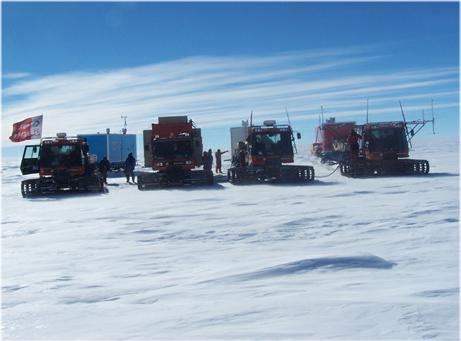There's a city there now and if you visit K'un Lun City and drink the yellow water in the lakes of its parks known as cinnabar (tan), they also say you will become immortal.(2)
That last part is scientifically undocumented. Drinking yellow water is generally a bad idea.
I first discovered the mysticism of K'un Lun as a young guy when I got an Iron Fist comic book. In the comic, young Danny Rand went looking for it with his parents because it was a city that would only appear out of the mist every 10 years. The bridge to the city appeared on schedule but while crossing his father had an accident and his father's business partner killed him off because he wanted both his wife and his money. Classic.
I can save you all that drama. If you're going there any time soon, just follow this sign:

K'un Lun
Shortly thereafter his mother died protecting him from wolves but the city had made its once-per-decade appearance and the monks took young Danny inside, where he would remain for 10 years until the portal opened again and he left to seek his revenge. That's a lot of story for 8 pages in a comic book, right? Yeah, you can imagine that grabbed me in 1975 too.
Blonde, kicks butt, he was basically Chuck Norris with more mysticism. I outgrew the comic book (3) and one black belt later I could still not make my fist glow, no matter how hard I tried, but the K'un Lun thing stuck with me. Mythical cities in the mist tend to do that.

Iron Fist. Copyright, credit, etc. Marvel Comics Group.
But there's sometimes science in the mists too.
13,000 feet above sea level, nearly the highest ice in Antarctica, a research base is taking shape that should begin operation in under two weeks. Name: K'un Lun. It's a desolate place and they are in a rush because the temperatures in February will reach a brisk –50 °C.
The goal is to get ice cores dating farther back than any yet known because, it is believed, there is history trapped in that ice that can tell us about ancient climates and maybe even the beginning of the planet. 
Dome Argus, future home of the new K'un Lun
If you've read science in the last 10 years, you've read a lot about ice cores. And that's because, to non-geologists, they can be something of a problem. Ice cores are one of the few things that can provide ammunition for both global warming detractors and creationists, two groups you don't usually associate with each other (unless you are a Democrat.) Why ice cores?
There are multiple ways of dating ice cores - which is the only way to calibrate the data you will find accurately - but there are disputes regarding the accuracy of each dating method. And then there are disputes about the statistical analysis abilities of researchers who have written some of the more hysterical papers you may have seen about global warming. Therein lies the problem; skeptics are not about proving science, they are about seeding doubt regarding science. And in most science, there is always some doubt. So hysterical claims are used to invalidate the overwhelming number of legitimate studies.
Unfortunately the skeptics are not entirely wrong, it's just that what they do with that data is sometimes wrong. The most commonly referenced ice core is Vostok, also from Antarctica, because it has been shown to be accurate based on isotopic analysis, ice-flow calculations, paleoclimatic comparisons and the various other methods. But the date of this core has been placed at around 160,000 years so climate model data is thrown into doubt due to the relatively brief geologic time and evolution is thrown into doubt because there isn't 'proof' the Earth is all that old.

Vostok ice core microbes. Credit: University of Montana
Obviously geologists are going to have a variety of objections to my simplification but they need to take it up with the people using data incorrectly, not me. Ice cores have been extracted more recently that go back around 800,000 years.
The researchers at K'un Lun want to go even farther and Antarctica is the perfect place to do it - it is cold, windy and the driest continent on Earth, with precipitation as little as 2 centimeters per year in some spots. That means its ice sheet, some 15,000 feet thick, houses chemicals and impurities that dissolved each year and can tell us about Earth of that time.
It's not a trivial task but if they succeed they will be able to get ice cores going back around 1.5 million years, which is good news for making more accurate climate models - there are channels of air compressed into the ice that form bubbles, storing for us the properties of that trapped air - and pushing back the age of ice cores in a way that can't be scientificially disputed takes us out of the realm of mythology and into the world of data.
I liked learning about K'un Lun as a kid because it opened up a world of magic and adventure and as I grew I wanted to learn about the real things it inspired. Here's hoping 25 researchers at today's K'un Lun can do the same for the next generation.
END NOTES:
(1) If you are also inspired , you can order this "Free Tibet* *with purchase of another Tibet of equal or greater value" shirt here.
(2) Learn more about Chinese mythology here.
(3) Sort of: they have brought Iron Fist back recently so I bought all 21 new issues on Ebay in the middle of writing this.
Learn more about the new base in this article by Jane Qiu - "China builds inland Antarctic base", Nature News (06 Jan 2009), doi: 10.1038/457134a




Comments